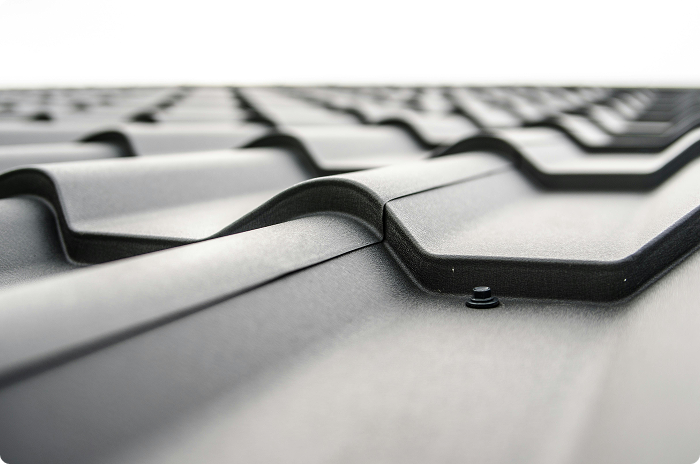Roof Rescue: How to Fix Cracked, Curling, and Missing Shingles
By Molly Dean · Jul 25, 2025

Shingle damage is a common issue that homeowners face, often resulting from weather exposure or lack of maintenance. The integrity of your roof can be compromised by cracked, curling, or missing shingles, leaving it vulnerable to leaks and other structural issues. Neglecting these signs can lead to bigger problems like roof sagging or even the need for a complete roof replacement. By understanding the causes and taking timely action, you can extend the life of your roof and save on costly repairs. This article will guide you through the process of identifying different types of shingle damage and how to address them effectively.
Common Causes of Shingle Damage
Weather Exposure
The primary cause of shingle damage is exposure to weather elements. Over time, UV rays, rain, snow, and wind can deteriorate the shingles.
Types of Weather-Induced Damage
- Cracked Shingles: Often caused by extreme temperature fluctuations that make shingles brittle.
- Curling Shingles: High humidity and improper ventilation can cause shingles to curl at the edges.
- Missing Shingles: Strong winds and storms can displace shingles, leaving your roof exposed.
Identifying Shingle Damage
Cracked Roof Tiles
Cracks in roof tiles are a clear sign of wear and tear. These can occur due to thermal expansion and contraction or impact from debris.
How to Spot Cracked Shingles
Look for visible cracks or splits in the shingles. These are usually uniform in pattern and can be seen during a close inspection.
Curling Shingles
Curling occurs when the edges of the shingles turn up or down, often due to moisture or inadequate ventilation.
Signs of Curling Shingles
Visual inspection will reveal the edges of the shingles curling upward or downward, creating an uneven surface.
Missing Shingles
Shingles can go missing due to high winds or improper installation.
How to Identify Missing Shingles
Gaps in the roof where shingles should be are a clear indication. You might also find loose shingles in your yard after a storm.
Roof Sagging
Sagging is a serious structural issue often related to prolonged moisture exposure and compromised shingle integrity.
Signs of Roof Sagging
Noticeable dips or sagging areas in the roofline signal a more severe problem that requires immediate attention.
Preventive Measures
Regular Inspections
Conducting regular roof inspections helps identify minor issues before they escalate.
Frequency of Inspections
Aim to inspect your roof at least twice a year, preferably in spring and fall. After extreme weather events, an additional inspection is advisable.
Maintenance Tips
Proper maintenance can extend the lifespan of your shingles.
Tips for Shingle Maintenance
- Clean Gutters: Ensure your gutters are free of debris to prevent water backup.
- Trim Overhanging Branches: This reduces the risk of falling debris that can damage shingles.
- Improve Ventilation: Proper attic ventilation prevents moisture buildup that can cause shingle curling.
Repairing Shingle Damage
DIY vs. Professional Repairs
Minor shingle repairs can often be done by homeowners, but significant damage may require professional intervention.
When to DIY
For small issues like a few cracked or missing shingles, you can handle the repairs with basic tools and materials.
When to Call a Professional
If the damage is extensive or you notice signs of sagging, it's best to consult a roofing expert.
Steps for DIY Shingle Repair
Materials Needed
- Replacement shingles
- Roofing nails
- Hammer
- Roofing sealant
Repair Procedure
- Remove Damaged Shingles: Carefully lift the surrounding shingles and remove nails from the damaged shingle.
- Install New Shingles: Align the new shingle and secure it with roofing nails.
- Seal the Shingles: Apply roofing sealant to the edges of the new shingle to ensure a watertight seal.
When to Replace Your Roof
Evaluating Roof Lifespan
The typical lifespan of a roof varies based on materials and maintenance.
Signs It's Time for a Replacement
- Multiple areas with shingle damage.
- Persistent leaks despite repairs.
- Noticeable sagging and structural issues.
Choosing the Right Materials
Selecting durable materials can improve the longevity of your new roof.
Material Options
- Asphalt Shingles: Common and cost-effective.
- Metal Roofing: Durable and long-lasting.
- Tile Roofing: Aesthetic and robust but more expensive.
Conclusion
Maintaining your roof is vital for ensuring the safety and longevity of your home. By understanding different types of shingle damage and taking proactive measures, you can prevent costly repairs and extend the life of your roof. If you still have questions or need professional help, consider using HouzTask AI to get personalized advice and find top-rated roofing experts in your area.
Need help?
Let HouzTask help you diagnose the issue or connect with a trusted local pro — in minutes.
Get Started with HouzTask